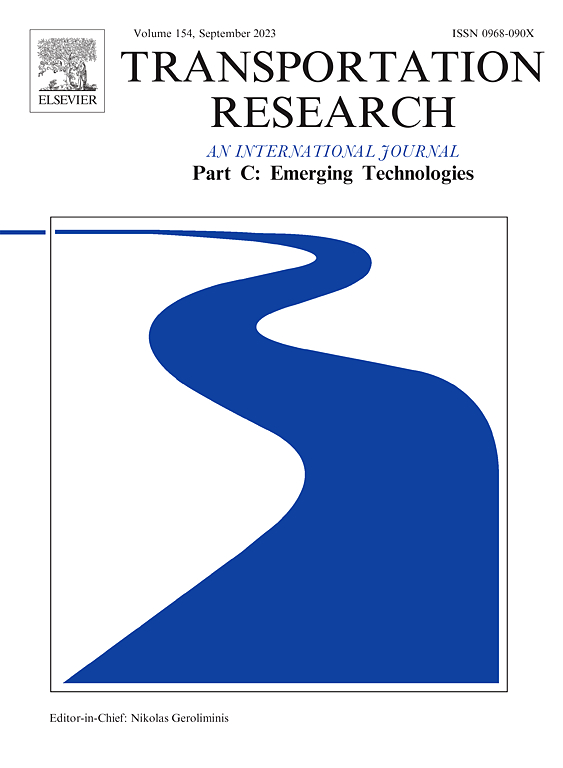A knowledge-driven, generalizable decision-making framework for autonomous driving via cognitive representation alignment
IF 7.6
1区 工程技术
Q1 TRANSPORTATION SCIENCE & TECHNOLOGY
Transportation Research Part C-Emerging Technologies
Pub Date : 2025-02-08
DOI:10.1016/j.trc.2025.105030
引用次数: 0
Abstract
With the boom of machine learning (ML), knowledge-driven autonomous driving (AD) holds great promise for improving its performance and reliability in future practical applications. To endow AD with better generalization ability like that of human drivers, knowledge transfer has gathered increasing attention in recent years. For knowledge transfer, determining what acts as knowledge and how knowledge can be transferred, as well as which knowledge should be transferred, plays a crucial role in its actualization and reliability. In this paper, we propose a knowledge-driven, generalizable decision-making framework for AD, called cognitive representation alignment. Specifically, the cognitively plausible predictive map serves as a basic knowledge-driven foundation (addressing ‘What’ and ‘How’), and a representation alignment scheme based on graph representation and shortest path graph kernel is developed to serve as the knowledge matching criteria to enable more reliable knowledge transfer (addressing ‘Which’). We pre-establish several kinds of typical driving scenarios (feature scenarios) and extract the knowledge from them to construct a knowledge reservoir. For validation, CommonRoad, a real-world logs-driven simulation benchmark, is used to test the effectiveness of our framework. Empirical results from 500 testing scenarios demonstrate that the proposed framework can not only enhance decision-making performance but also further improve driving safety, navigability, and generalization ability, fueling the futuristic development of a knowledge-driven AD paradigm.
求助全文
约1分钟内获得全文
求助全文
来源期刊
CiteScore
15.80
自引率
12.00%
发文量
332
审稿时长
64 days
期刊介绍:
Transportation Research: Part C (TR_C) is dedicated to showcasing high-quality, scholarly research that delves into the development, applications, and implications of transportation systems and emerging technologies. Our focus lies not solely on individual technologies, but rather on their broader implications for the planning, design, operation, control, maintenance, and rehabilitation of transportation systems, services, and components. In essence, the intellectual core of the journal revolves around the transportation aspect rather than the technology itself. We actively encourage the integration of quantitative methods from diverse fields such as operations research, control systems, complex networks, computer science, and artificial intelligence. Join us in exploring the intersection of transportation systems and emerging technologies to drive innovation and progress in the field.

 求助内容:
求助内容: 应助结果提醒方式:
应助结果提醒方式:


